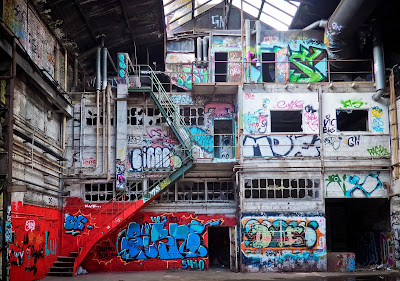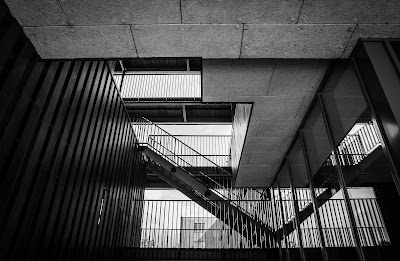Steel handrails are the most popular type of stair railing. They are a good choice because they can be used on all types of stairs and floors, and they do not require any special mounting hardware.
Handrails for stairs are a safety measure to prevent falls from happening. To choose the best handrail for your staircase, it is important to know the different types of rails, their installation process, and why you should buy them from a reputable company.
The usage of steel handrails is not just restricted to residential buildings, but they are also used at commercial sites. These handrails are more resistant to corrosion and can withstand high levels of exposure to the elements. These rails are often used in basements, stairways, and ramps.
Steel handrails are installed on stairs or ramps instead of wood or metal because it is heavier-duty material that's more resistant to wear and tear. They're also safer for people with disabilities because they're non-slippery surfaces that provide a better grip for people who need assistance getting up or downstairs or ramps.
Introduction: Steel for handrails and handrails has been a popular material for decades
Steel for handrails and handrails has been a popular material for decades. Steel is a metal alloy that is made of iron and carbon.
This material has been used in construction for many years because it is strong, durable, and inexpensive. It can also be shaped into many different sizes to fit any application. There are many uses for steel in the construction field, but one of the most common places you will find steel with a handrail or a handrail would be on the stairs in a building or at an airport.
Steel also has properties that make it great when used as a railing at home too. Steel does not bend easily when it becomes cold so it makes an excellent option when you live in an area where temperatures drop below freezing during the winter months.
Steel is a versatile material and has been used in the making of handrails and handrails for decades. It provides stability, strength, and can be used for a vast range of purposes.
Steel is strong and durable. These properties make it an excellent choice for handrails. It can be relied upon to provide stability where needed, but also provide flexibility where needed. Steel is also easy to work with, which makes it an ideal option for those who would like to DIY their steel railings.
It comes in many different types, which allows the steel to be customized for its purpose as well as the needs of the individual. This allows metalworkers to make sure that they can get the perfect product every time they order steel rails or handrails.
What are the Advantages of Metal Handrails?
Metal railings are a great choice because they are strong and durable. They can last a lifetime with proper care.
Metal handrails have many advantages including being corrosion-resistant, strong, and durable.
Metal handrails are a relatively new invention and they can come in different forms. They allow you to have better balance and they also protect the railings from wear and tear. Furthermore, metal handrails can be used to create a sense of uniformity and continuity, so that the design doesn't look jarring.
The advantages of metal handrails are:
-They don’t allow dirt to settle as easily.
-They don’t require frequent maintenance like wooden rails do, which makes them more cost-effective than wooden rails.
-The material is durable and lasts for years without needing much maintenance.
-People with mobility issues can use them for support while walking up the stairs.
What to Consider When Selecting a Metal Handrail or Rail?
Metal handrails are an inexpensive yet stylish option that will enhance the look of your stairs. They come in many different shapes and sizes, giving you the chance to customize your stair railing design.
You should consider the following factors when selecting a metal handrail or rail for your staircase:
1. The type of metal you’re looking for (steel, aluminum, stainless steel;
2. The material it is made of (coated steel, iron);
3. The design (straight rail, curved rail)
- Residential stairs: a metal railing is a great choice if the stairs are short and not too steep.
- Commercial stairs: a metal railing is also popular for commercial buildings as they offer safety and durability.
- Elevators: If you need to go up or down to an elevator, you'll want to consider how people will enter and exit the elevator as well as how many people will use it on any given day.
How to Install a Metal Handrail on Your Home's Stairs?
Metal handrails are a great way to add style and safety to your stairs. They come in a variety of styles, lengths, and colors.
While metal handrails are generally easy to install, there are a few things you should take into consideration before installing them. Here is how you can install a metal handrail on your home's stairs:
- The first thing you need to do is measure the height of the handrail from ground level and mark it on the wall from where the rail will start. This way you will know how high or low your rail should be when it is installed.
- Next, measure out from where the rail ends up on the wall to find out how long it should be when complete. Add this length to your measurement from before so that you know exactly how long your new rail should be.
You can install a metal handrail on your home's stairs for added safety and security. In this article, we will provide you with some helpful tips to make the installation as easy as possible.
1. Plan your installation
It’s important to plan your installation before you start installing your handrail. You should determine how many steps you need and what height of railing or handrail would be best for you and the space that is available to do the installation in.
2. Measure Your Staircase
Before cutting any metal railing, you must measure the width of every single step on your staircase and measure the width of all of the risers between each step. You can use a measuring tape or a laser level to make sure that all measurements are accurate and precise before beginning.








0 Comments